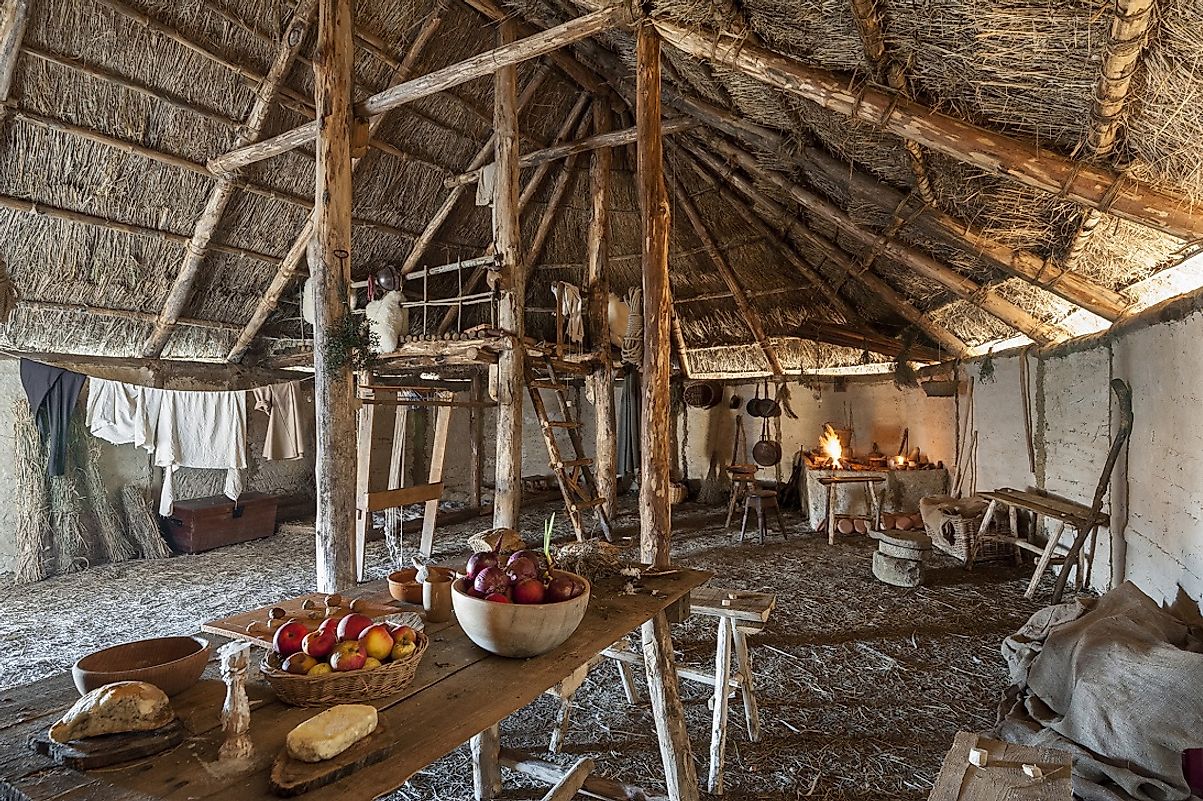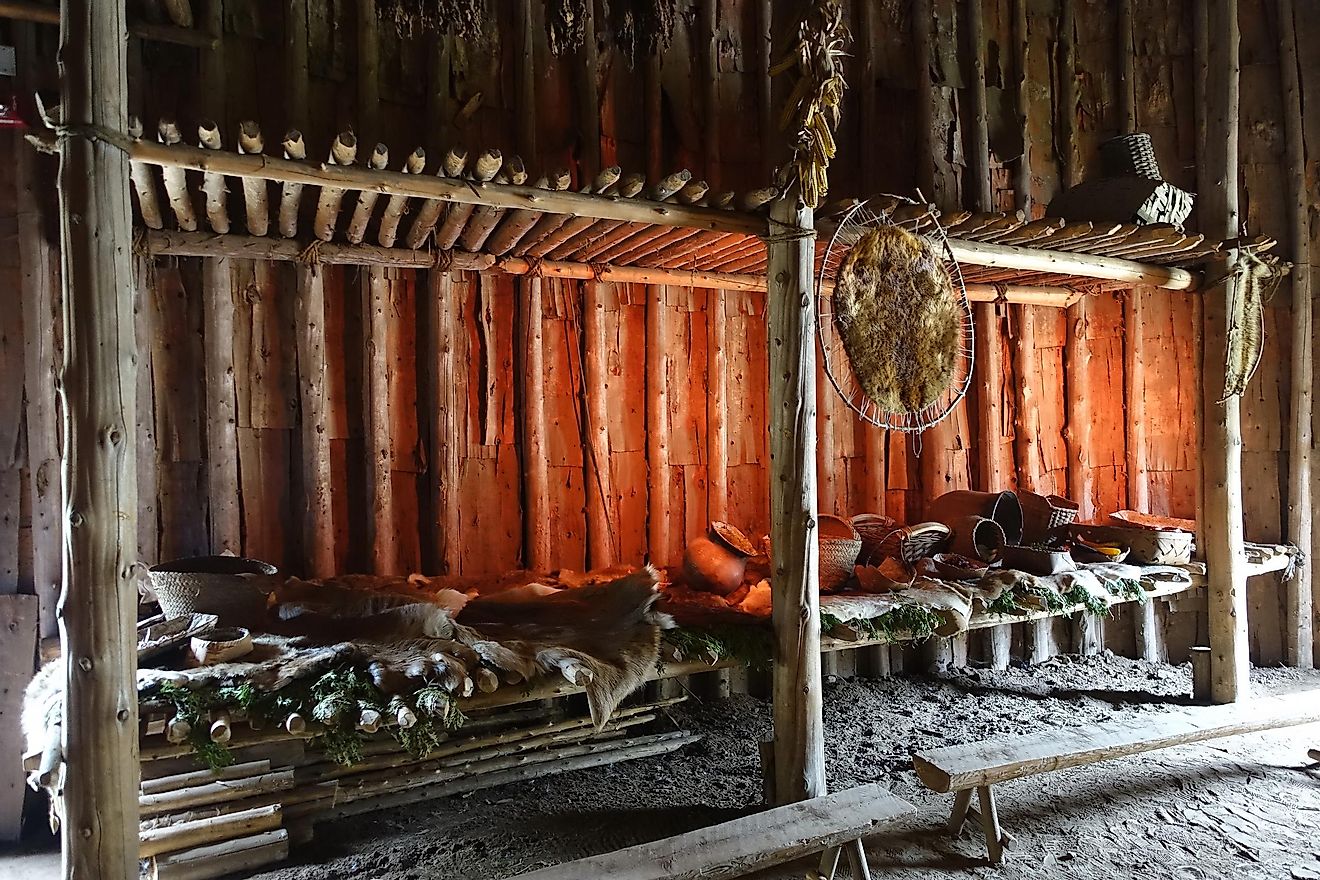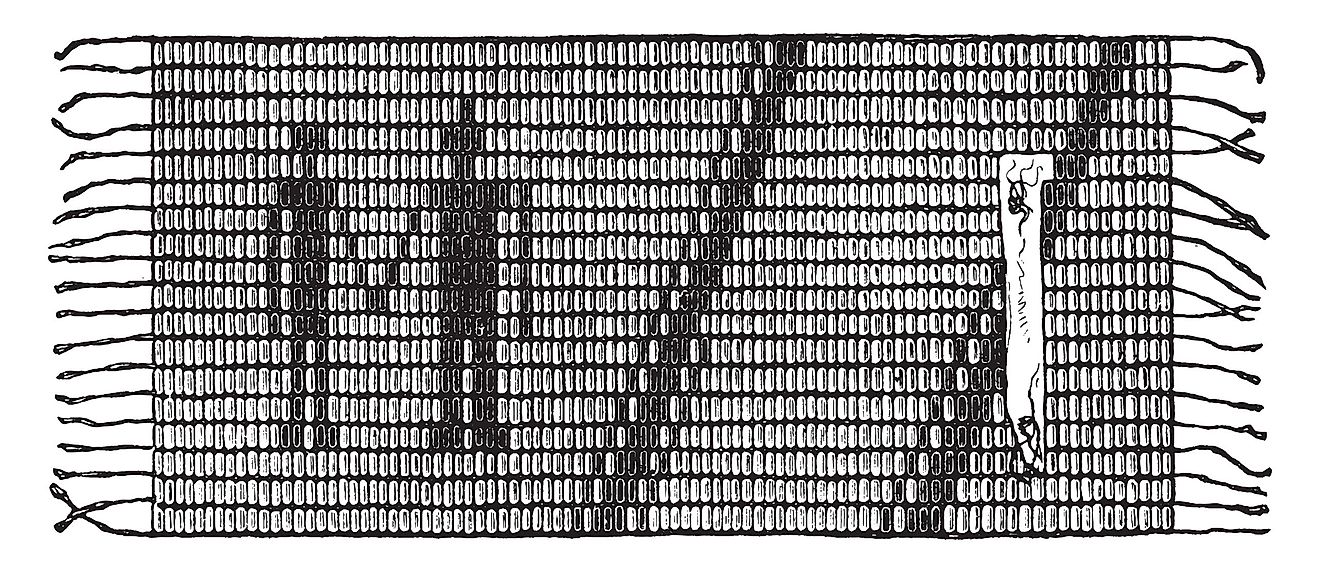The Tuscarora People

Description
The Tuscarora peoples are an Indigenous group in the Iroquoian language family. This nation had its origins in what is now the state of North Carolina, but they migrated north to New York and Pennsylvania in the 18th century. The word Tuscarora is derived from their extensive use of hemp for cloth, rope, and other materials, and it means "hemp gatherers."
After a migration northward, the Tuscarora aligned with the five nations in the Iroquois Confederacy, also called the Haudenosaunee. Sponsored by the Oneida nation, they became the sixth nation of the confederacy sometime around 1722. The other nations in the confederation are the Seneca, Cayuga, Onondaga and Mohawk. Today, many have resettled in the Canadian province of Ontario. Most of the Tuscarora people are English-speaking, though efforts to preserve and revive the language are ongoing.
Architecture

Traditionally, the Tuscarora people lived in villages made up of large wooden-framed buildings smothered with sheets of elm bark known as longhouses. These longhouses were about 100 feet long and would house multiple families in one. In the present day, longhouses are only used for celebrating ceremonies. Today, the Tuscarora and other Iroquoian nations generally live in Western-style houses and apartments no different from those of other North American residents.
Cuisine
The Tuscarora people cooked simple food. They preferred eating fresh food without using spices. This is in contrast to the Indigenous nations from Central America and Mexico, which used more complex food preparation with more spices, including cumin, chocolate seasonings, and hot peppers.
The Tuscarora grilled game meat over hot stones or roasted over their fires, while fish was smoked or baked. Like the other nations of the Iroquois Confederacy, the Tuscarora's three main crops were corn, beans and squash, known as the Three Sisters. Corn especially was used in many different ways, including as cornbread baked in their clay ovens, popcorn, corn-on-the-cob, tortillas, and hominy. They also enjoyed maple candy and fruit puddings for desserts.
Cultural Significance

Their lifestyle involved hunting and gathering as well as farming. Apart from this, they could collect fish from rivers, gather shellfish from the ocean, and, thus, fishing played a significant role in their way of life and their diets.
The Tuscarora adopted the Great Law of Peace, which dictates the Haudenosaunee political and social structures. The Law of Peace was essentially a constitution, and it is believed the American Founding Fathers were inspired by the Great Law when drafting the US Constitution. The Great Law of Peace was codified using a memory device in the form of a beaded belt known as Wampum which was said to have inherent spiritual values.
Threats
In the early 1930s, the Tuscarora people filed a petition to be included in the US Indian Reorganization Act. However, for two decades, they were not included in IRA, as the investigators felt that they aren’t eligible. Then, in 1979, the US Department of the Interior formulated a process through which unrecognized tribes in the country were given more power to file petitions for Federal recognition.
Today, they face similar challenges shared with other urban minority communities. Some reports show higher rates of high school dropout and poorer literacy than their non-Indigenous neighbors. Because of such educational disparity, poverty and unemployment are also problems.







